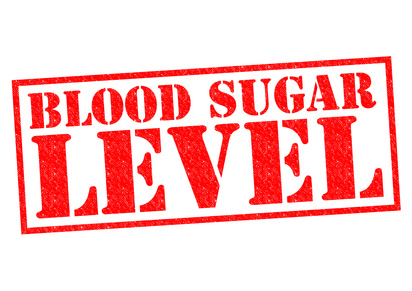Chromium (Cr)
 The mineral chromium is found in various forms. Hexavalent chromium is used for industrial purposes such as chrome plating, tanning of hides, dyes, wood protection etc. This form of chromium is toxic and may cause contact dermatitis and certain cancer forms. Trivalent chromium, on the other hand, is found in biological matter such as plants and animals and is an essential nutrient. As the body's need for chromium is rather small, this nutrient is characterised as a trace element. The body stores around 4-6 mg of chromium.
The mineral chromium is found in various forms. Hexavalent chromium is used for industrial purposes such as chrome plating, tanning of hides, dyes, wood protection etc. This form of chromium is toxic and may cause contact dermatitis and certain cancer forms. Trivalent chromium, on the other hand, is found in biological matter such as plants and animals and is an essential nutrient. As the body's need for chromium is rather small, this nutrient is characterised as a trace element. The body stores around 4-6 mg of chromium.
Functions and importance for
- The body's macronutrient metabolism (turnover of carbohydrate, fat, and protein)
- Maintenance of normal blood sugar levels
- The effect of insulin
- Fetal growth and protein synthesis
What is blood sugar and what effect does chromium have?
Our blood sugar provides energising substances to the body's cells in the form of glucose (dextrose). Our blood sugar is normally relatively stable but rises right after we eat a meal. After some time it drops back to normal and we feel hungry again. Even with these minor fluctuations, our blood sugar is maintained within what is considered normal a normal range.
Glucose enters the cells with help from the hormone insulin but chromium also takes part in the process. For years, it was assumed that chromium was a component of GTF (Glucose Tolerance Factor). However, this theory was only partially supported. More recent research has demonstrated the presence of another chromium containing compound called chromodulin. It works by binding to the insulin receptors of cells, collaborating with insulin as a team that allows optimal amounts of glucose to enter the cells. In other words, insulin does not work properly without the presence of chromium, as they are both needed in order for the cells to take up sufficient amounts of glucose. If there is too little chromium, glucose stays in the blood instead of entering the cells. The unused calories will eventually be cleared from the bloodstream and stored as fat, instead.
The effect of insulin and chromium even shows that energy metabolism, blood sugar management, and weight regulation is not merely a matter of how many calories you consume but most certainly a result of how effectively the cells are able to convert them to energy.
Deficiencies and poor utilisation may be caused by
- Lack of chromium in the soil
- A large consumption of sugar and other refined foods
- A large consumption of alcohol, coffee, and other stimulants
- Lack of vitamin C
- Lack of dietary fibre
- Pregnancy
Deficiency symptoms
- Impaired insulin function and elevated blood sugar levels
- Insulin resistance/glucose intolerance
- Fatigue, difficulty with concentrating and other symptoms from the nervous system that follow in the wake of abnormal blood sugar levels
- Elevated cholesterol
Possible causes:
- Metabolic syndrome (insulin resistance, elevated blood pressure, elevated cholesterol and abdominal obesity/apple shape body). This condition is a forerunner of type 2 diabetes
- Type 2 diabetes and possibly also type 1 and type 3 diabetes
- Diabetes caused by prolonged treatment with corticosteroids
- Gestational diabetes
Sources
Mainly brewer's yeast, tea leaves, cocoa beans, apricot, poppy seeds and other types of seeds, black pepper, thyme and other spices, almonds, beans, nuts, fish, shellfish, and meat. Smaller amounts of chromium are found in grain, fruits, vegetables, and dairy products.
Chromium content in micrograms per 100 grams
| Cocoa powder | 173 |
| Abricots (dried) | 80 |
| Sea trout, cod liver | 20 |
| Almonds (raw) | 12 |
| Meat (beef, pork, lamb) | 4-8 |
Recommended daily allowance (RDA)
Adults: 11 years of age and older: 40 micrograms
Children: 1-10 years of age: 11 micrograms
The exact chromium requirement is not known. Daily intake in the range of 20-200 micrograms is believed to be sufficient.
Increased need
- Large consumption of sugar and stimulants
- Impaired insulin function and elevated blood sugar levels
- The above mentioned deficiency diseases
- During pregnancy (as a way of preventing gestational diabetes)
Various supplements and bio-availability
Supplements contain various forms of trivalent chromium: Chromium yeast, chromium chloride, and chromium picolinate. The EFSA (European Food Safety Authority) has concluded that the bio-availability of chromium picolinate is limited and only slightly better than the bio-availability of chromium chloride. In addition, the EFSA has concluded that chromium yeast is up to 10 times more bio-available than synthetic products with chromium chloride or chromium picolinate.
Important information
Increased intake of sugar and stimulants increase chromium excretion in the urine. This may easily turn into a vicious cycle, as we need chromium to maintain stable blood sugar levels. It is relatively difficult for the body to absorb chromium. The best chromium absorption is seen with chromium from animal foods and supplements based on chromium-enriched brewer's yeast.
Vitamin C increases the body's uptake of chromium
Overdosing - side effects
Even large concentrations of trivalent chromium (that is found in foods and supplements) has not been seen to cause poisoning. Hexavalent chromium (which is used for industrial purposes), on the other hand, may cause serious kidney and liver damage when ingested in doses of around 1-2 grams. Hexavalent chromium may also cause contact dermatitis and increase the risk of cancer. People who work with hexavalent chromium in various industrial processes are highly exposed.







